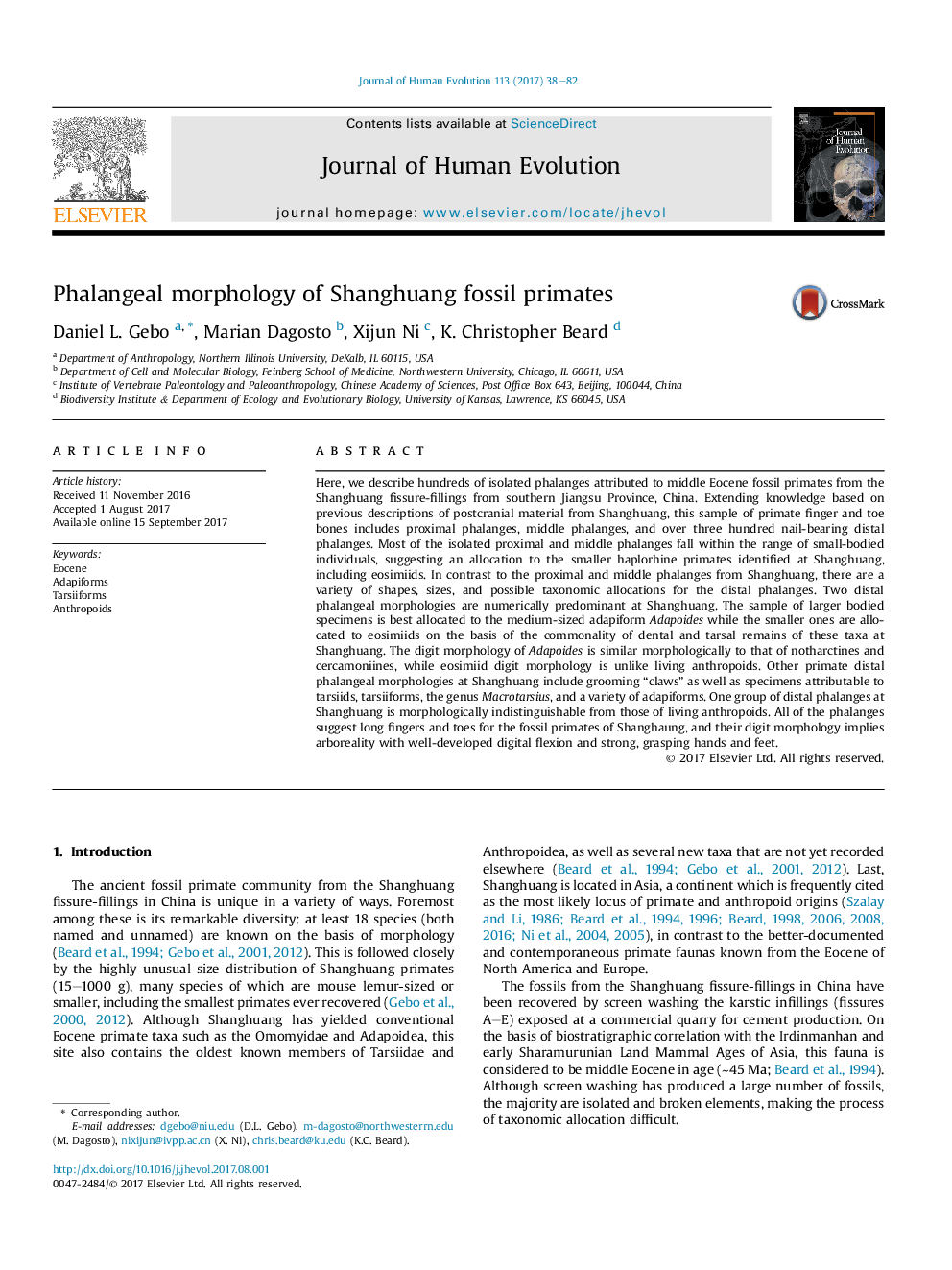| کد مقاله | کد نشریه | سال انتشار | مقاله انگلیسی | نسخه تمام متن |
|---|---|---|---|---|
| 5766796 | 1628136 | 2017 | 45 صفحه PDF | دانلود رایگان |
Here, we describe hundreds of isolated phalanges attributed to middle Eocene fossil primates from the Shanghuang fissure-fillings from southern Jiangsu Province, China. Extending knowledge based on previous descriptions of postcranial material from Shanghuang, this sample of primate finger and toe bones includes proximal phalanges, middle phalanges, and over three hundred nail-bearing distal phalanges. Most of the isolated proximal and middle phalanges fall within the range of small-bodied individuals, suggesting an allocation to the smaller haplorhine primates identified at Shanghuang, including eosimiids. In contrast to the proximal and middle phalanges from Shanghuang, there are a variety of shapes, sizes, and possible taxonomic allocations for the distal phalanges. Two distal phalangeal morphologies are numerically predominant at Shanghuang. The sample of larger bodied specimens is best allocated to the medium-sized adapiform Adapoides while the smaller ones are allocated to eosimiids on the basis of the commonality of dental and tarsal remains of these taxa at Shanghuang. The digit morphology of Adapoides is similar morphologically to that of notharctines and cercamoniines, while eosimiid digit morphology is unlike living anthropoids. Other primate distal phalangeal morphologies at Shanghuang include grooming “claws” as well as specimens attributable to tarsiids, tarsiiforms, the genus Macrotarsius, and a variety of adapiforms. One group of distal phalanges at Shanghuang is morphologically indistinguishable from those of living anthropoids. All of the phalanges suggest long fingers and toes for the fossil primates of Shanghaung, and their digit morphology implies arboreality with well-developed digital flexion and strong, grasping hands and feet.
Journal: Journal of Human Evolution - Volume 113, December 2017, Pages 38-82
